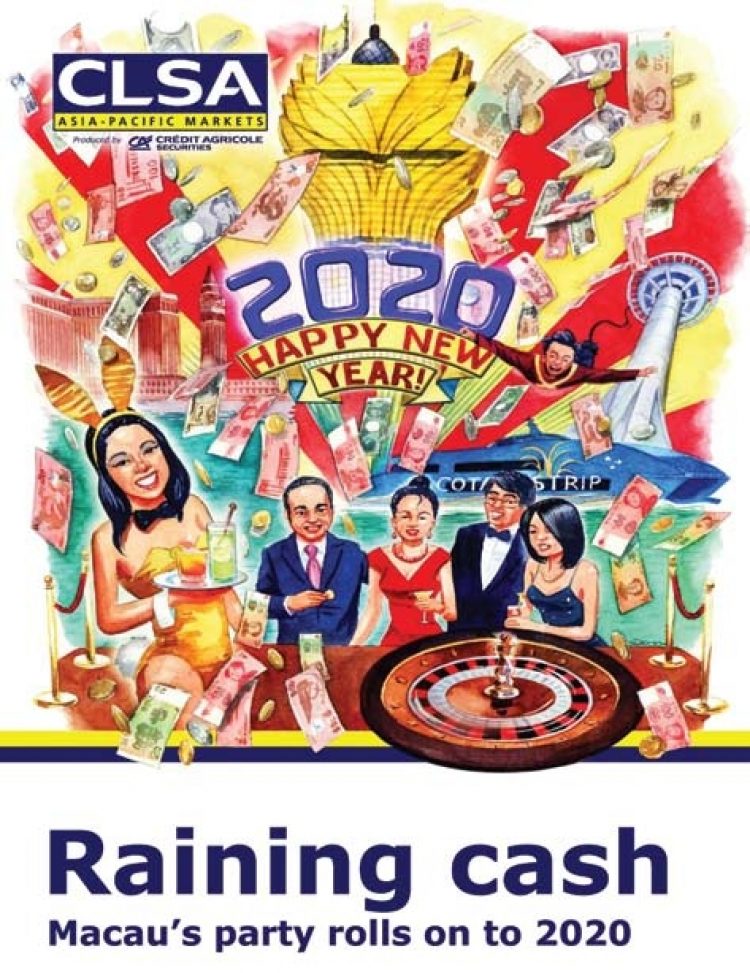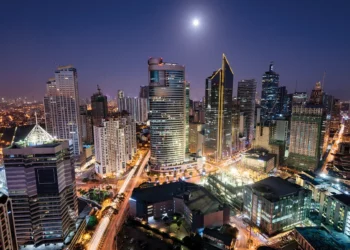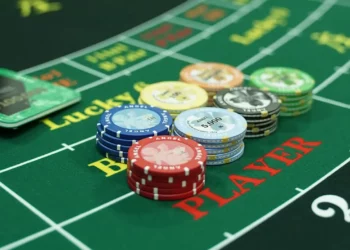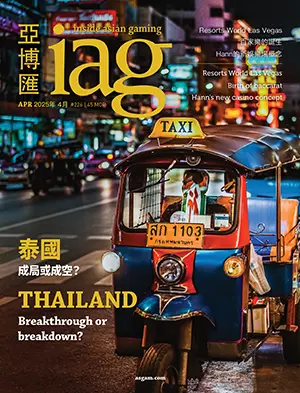In its latest authoritative report on the Macau gaming sector, leading regional independent brokerage and investment group CLSA Asia-Pacific Markets offers its industry outlook up to 2020. Among the notable forecasts offered by report authors Aaron Fischer, Richard Huang, Jon Oh and Clifford Kurz, Macau gaming revenue is expected to hit US$108 billion in 2020
Strong China-led gaming demand combined with tight supply of casino tables has resulted in a favourable industry landscape for Macau casino operators. Over the next decade, we forecast Ebitda [earnings before interest, taxes, depreciation, and amortisation] and netprofit Cagrs [compound annual growth rates] of 23% and 29%, respectively, for the industry. Rapid earnings growth will drive the market cap of the six listed gaming companies operating in Macau to US$387 billion by 2020, representing a 20% annual share-price return over the coming 10 years.
Expect 11-25% growth
We forecast Macau gaming revenue to grow by 20-25% in 2012-13 and 11-15% in 2014-20 on increased discretionary spending (on rising incomes) and booming outbound Chinese tourism, supported by significant infrastructure improvements.
As of 2011, Macau has already emerged as one of the largest gaming markets in the world. We forecast its gaming revenue to hit US$34 billion this year, compared to about US$6 billion for Singapore and Las Vegas. The graph below compares Las Vegas and Macau’s gaming revenue. We can see that the enclave overtook the sin city in 2006 and was four times its size in 2010. The vast size, fast expansion and high profitability of Macau’s gaming sector lead many to question the sustainability of its growth.
Chinese people’s love for gaming, stemming from a belief in luck, is the key cultural difference explaining their distinctive approach to gambling. Westerners like spending, however, on various items. In Las Vegas, gaming revenue only accounts for 40% of total casino income, while in Macau, it makes up 94%. Las Vegas casinos are generating US$16 billion in total revenue each year, while Macau casinos are closer to US$25 billion in 2010.
The simple reason why non-gaming as a portion of Macau’s total will not approach the 60% level for Las Vegas operators is simply due to the absolute size of the market’s gaming revenue, which should reach US$34 billion in 2011. To achieve the same mix, this would imply non-gaming spending of US$51 billion—that is a lot of abalone, bird’s nest, Mouton Rothschild and luxury-goods items to bring home for friends and family.
Also worth noting is that Las Vegas is only a small part of the US gaming industry (less than 10% of total revenue). We expect Macau to make US$34 billion in gaming revenue this year, compared to US$60 billion in the USA, making it about half the size of the whole US gaming market. With a much larger potential customer base (1.3 billion people in China versus a population of 0.3 billion in the USA) and a much stronger gaming appetite, we believe the size of Macau’s gaming industry could be a multiple of that of the USA’s in the long term.
The world’s largest gaming market by 2015
We expect Macau to deliver US$65 billion of gaming revenue in 2015, surpassing the USA to become the world’s largest gaming market. By 2020, the figure should approach US$108 billion, nearly twice that of the USA.
Stress-testing our growth estimates
Our US$108 billion estimate for Macau might seem overly aggressive. However, excluding the US$22 billion from new Cotai projects, which help grow the market and are scheduled to be completed between now and 2020, the remaining US$53 billion increase is organic and implies 11% growth per annum. Our forecast assumes revenue growth of 10% for the VIP segment and 12% for the mass market and slot machines post 2014. We expect a slowdown in the VIP market as tables gradually approach maximum capacity. Tourist-arrival growth is also likely to slow from 10% to 5% from 2013, as the base continues to go up. Increasing visitor arrivals and gaming spending will contribute equally to our estimated 11% organic growth in gaming revenue. Note that we realise the growth rate will not be as steady as predicted and will depend on macro factors and the timing of various casino openings.
To perform a sanity check on our forecast, we also analyse implied win per table. Our assumptions suggest win per table per day will enjoy a 9% Cagr between 2011 and 2020, from US$6,149 to US$13,821 (similar to that in 2002) in the mass market and from US$34,107 to US$81,078 in the VIP segment.
Limited table supply in Macau ensures high earnings visibility and strong investment return for casino operators. However, it also restrains their topline growth. Over the past years, increasing bet size has been fuelling win per table and gaming-revenue growth. We do not believe average gaming spending per tourist can continue to grow at a 30-40% rate indefinitely and have been factoring in a slowdown in our forecast. If table supply were to grow faster, at say 10%, Macau would see much stronger growth in gaming revenue, as casino operators would have more capacity (gaming and hotels) to meet the robust Asian demand.
Comparing with the broader consumer universe
Our growth estimates also imply an average gaming spending of US$78 per capita per year, which is reasonable; an average spending of US$197 per Chinese consumer on clothing & footwear and US$422 on food and beverages per year in 2020.
Despite the burgeoning growth we project for the next decade, per-capita gaming spending in China is most likely to remain below that in the USA in 2020 (estimated US$78 versus US$211). Over 2010-13, we expect per-capita gaming spending in Macau to grow faster than percapita leisure expenditure, driven by the opening of Galaxy Macau and Sands Cotai Central. The growth is then likely to slow to be on par with that in leisure spending from 2013.
Sensitivity
Table supply growing faster than our expected 5%, at say 10%, over the next decade could drive gaming-revenue growth up to 15% over 2014-15 and 12% over 2015-20 (versus our initial forecast of 11% over 2014-20). In such a case, gaming revenue could grow to US$120 billion (compared with our base-case estimate of US$108 billion), while industry Ebitda can increase to US$35 billion (US$28 billion) in end-2020.
Highly profitable industry
High net win per table or average spending has translated into high returns for Macau’s casinos. Only Singapore betters Macau in casino Ebitda, due to its much lower gaming tax (12-22% versus 39% in Macau).
We project the Singapore operators, Resorts World Sentosa (RWS) and Marina Bay Sands (MBS), to deliver property Ebitda of US$1.6 billion and US$1.4 billion, respectively, in 2011, and US$2 billion over time. Macau’s top-performing casinos are making close to US$1 billion, while the most profitable Las Vegas casino, Wynn, earns close to US$500m.
Macau casinos are superior in terms of return on invested capital (ROIC). Sands Macao, the first American-built casino in Macau, has the highest ROIC of 133% in 11CL. Other properties on the Macau peninsula, including Grand Lisboa, Wynn Macau and Starworld generate ROIC of more than 60%. Singapore casinos are much less, at 27-28%, due to their higher construction cost (Marina Bay Sands at US$6.5 billion and Resorts World Sentosa at US$5.5 billion).
Growth in earnings outpacing that in topline
We expect Macau casinos’ Ebitda to grow at a quicker pace than the overall gaming revenue. For the next decade, we project a 16% Cagr in gaming revenue but 23% and 29%, respectively, in Ebitda and net income.
Drivers of the robust earnings growth include:
• Casino operators’ strong pricing power amid limited supply and the low possibility of commission wars given the favourable industry dynamics.
• More targeted and cost-effective marketing and rebate programmes.
• Improved revenue optimization of the available gaming space and tables, including a better mix between VIP and mass-market tables; more precise segment of differentiation among various customer types (mass, premium-mass, VIP); better slot offering that appeals to Chinese customers, etc.
• Growth in the mass-market segment, which carries about 40% margins, compared with the VIP business’s 10%.
• Growth in non-gaming businesses, such as hotels, retail, dining and other entertainment, which carry wider margins than VIP and have a high fixed-cost base.
• More powerful operating leverage across mass and non-gaming segments. Note that the VIP business does not have very high operating leverage given the high taxes and commission rates.
• Improvement in operational-cost efficiency.
• Low financial leverage, especially now versus during the global financial crisis. This will support faster growth at the net profit level





























